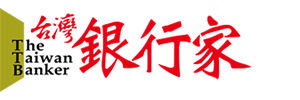2023.07 The Taiwan Banker NO.163 / By Lan Jian-yu
How to make the life insurance industry more robustBanker's Digest
As shown in the annual report of the Central Bank on capital flow statistics, the asset allocation of the household sector continued to be dominated by deposits, life insurance, and retirement funds in 2021, with a weighting of more than 60%. However, prior to 2020, due to the greater purchase of foreign currency and interest rate change policies, life insurance and retirement fund provisions ranked first in use of funds in the non-financial sector, with life insurance policies amounting to NT$1.75 trillion in 2019, and demand deposits NT$113 million.Environmental changes affect the sales of policiesThat situation reflected the booming business of the life insurance industry. Premium incomes were increasing year by year, reaching a record of 3.29 trillion yuan in 2018. In 2019, the performance was still 3.28 trillion yuan. The increase in premium income also increased the available capital position of the industry, but entering 2020, factors including a reduction of the policy liability reserve rate and lower declared rates for variable rate policies reduced purchases of traditional policies. In addition, the Financial Supervisory Commission (FSC) implemented a rate stabilization mechanism in July of that year, further weakening sales of traditional policies. It stipulated that declared policy rates should take the fixed-income bond rate into account, which is closer to the actual bond market interest rate, and contractual service margins (CSMs) should not be negative.According to statistics from the Life Insurance Association (LIA), the total premium income of the life insurance industry and initial-year premium income have both been decreasing each year since 2020. The premium income was NT$ 3.02 trillion in 2020, NT$ 2.64 yuan in 2021, and NT$ 2.11 trillion in 2022. The premium income from January-April of 2023 was NT$ 640.6 billion, a decrease of 12.6% compared with the NT$ 733.3 billion of the same period in 2022; initial-year premium income decreased by 26.9%. In addition to the depreciation of the NTD against the USD, which affects the sales of insurance products in NTD, the rapid increase in interest rates in the US has increased customers’ expectations for variable rate hikes. The industry makes relatively conservative adjustments, however, which has caused customers to stay on the sidelines, which has affected the initial-year premium income of variable rate policies.Of course, this situation is also reflected in the asset allocation of the household sector. Demand deposits have grown significantly, by NT$ 2.27 trillion in 2020 and NT$1.97 trillion in 2021. In contrast, life insurance reserves are lower than demand deposits, which is quite unusual, by NT$ 1.52 trillion and NT$ 1.21 trillion in 2020 and 2021, respectively. In fact, the tightening of US monetary policy and strong US dollar index have not only driven floating-rate sales, but also caused insurers to increase declared rates. Stricter management and control are still in place in order to ensure stable operations and safeguard the rights of policyholders.Unable to find domestic projects, funds look overseasThe main reasons that Taiwan’s life insurers place most of their funds overseas are that the industry has a large demand for long-term investment, and Taiwanese people in general tend to allocate assets globally. Domestic capital is in surplus, but the availability of domestic government bonds is small, and the average remaining term is less than 10 years. Even holding domestic NTD-denominated bond ETFs is a just compromise in order to avoid hitting the upper limit of foreign investment caused by the lack of favored investment targets.In 2007, in order to help the industry overcome spread compression, the upper limit of foreign investment was relaxed to 45%. In 2014, international board bonds were excluded from that limit, allowing foreign investment to reach 65.25% of total capital utilization. Including foreign currency non-investment insurance policies would increase that upper limit ratio, but would help improve the flexibility and efficiency of capital utilization. In this regard, Liu Shan-chi, president of Cathay Life Insurance, points out that due to the problems in the implementation of remaining early high-yielding policies, it has been necessary to maintain a certain return on investment. Since Taiwan lacks domestic targets suitable for long-term investment, it is necessary to move funds abroad, but doing so actually contributes to the elimination of excessive domestic hot money. Therefore, the author believes that the structure of insurance policies is skewed in favor of high savings, leading to a high degree of reliance on overseas investment, which has changed the industry’s operational risk profile from interest rate spreads to exchange rate fluctuations. Such large overseas investment positions will inevitably experience extreme volatility.New strategies for financial healthSome commentators have recently argued that rapid interest rate hikes of the Fed in 2022, coupled with the sharp appreciation of the US dollar, will weaken the attractiveness of USD policies. Some customers may even break contracts to switch to US government or corporate bonds. The shrinking of contract insurance premium income, coupled with reclassification of financial assets in order to solve the net worth crisis, has increased the proportion of bond assets as measured by amortized cost. Bonds cannot be redeemed at will, thus the result is tighter cash flow.This issue is indeed worthy of attention, but Chen Huei-yu, chairman of LIA, believes that it is mostly related to policies that are highly correlated with market interest rates, such as variable rate policies. A focus on fixed-rate policies polices should improve the stability of insurers. Moreover, the FSC has set strict requirements on insurers’ financial health, risk management, and capital adequacy. Chairman Chen pointed out that insurers also attach importance to liquidity and asset quality, especially in response to the problems mentioned above, and have taken action to increase their cash levels to ensure reasonable and appropriate liquidity.As for how to guide the funds of the life insurance industry to stay in the country, in fact, in addition to directly purchasing the securities or real estate of real industries, such as investing in public works and social welfare undertakings, the domestic public and private sectors, if funds are raised in securitized form when building public works and social welfare institutions, insurers can also invest in these securities to obtain a source of long-term fixed income. In addition, in August 2021, the FSC relaxed the investment target for private equity funds, and guided the industry to invest in domestic industries and important construction projects.Guiding funds into long-term care and green energyLiu of Cathay Life Insurance noted that although insurers have large capital pools, they are not only constrained by the Insurance Act, but also need to calculate their risk-based capital (RBC) according to corresponding risk coefficients. They can start changing their thinking by adjusting the risk coefficients of specific investments. In fact, in addition to the above statutory requirements, real estate investments must also meet the statutory standards of immediate use and profitability. Therefore, the author believes that the RBC for investments in long-term care and green energy industries in the form of private equity funds, for example, should be specially included among public works projects and social welfare undertakings, which is currently provisioned as 0.0128 for non-related parties and 0.0565 for related parties.The overall increase in the foreign life insurance ratio, which is higher than in Taiwan than in comparable countries, is mainly due to the reduction of interest rate spreads and increase in income. Investing overseas helps balance out supply and demand in the foreign exchange market. In addition to international board bonds, which are more favored by the industry, domestic investment targets also include bond ETFs that track overseas bonds and but are issued in Taiwan and denominated in NTD.Looking back at the domestic market rate environment over the past 20 years, although some insurers are gradually recovering from their rate spread losses, stricter international financial reporting standards are also getting stricter. After formal integration with IFRS17 in 2026, profit and loss calculations will change from premium income to a policy income basis. In the future, the industry will not only have to pursue profitability under foreign investment limits, but also determine asset allocation based on the composition of liabilities, and uphold the essence of life insurance of fixed rate protection in order to reduce demand for high-yield policies.


